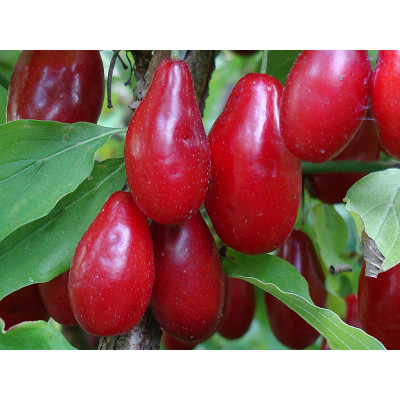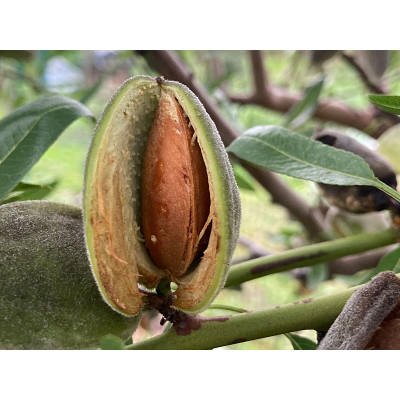Cherry and Sour Cherry Trees
Cherry trees (Prunus avium and Prunus cerasus), fruit trees of the rose family, are aesthetically attractive trees for their flowers during spring. Some species of cherry, especially sakura, are pronounced ornamental trees. However, they are cultivated primarily for their typically high yield of small fruits, their characteristics and their taste. The bright red fruits on the trees are the pride of many a grower. Cherries are sweeter and larger, while sour cherries have a sour taste and are mainly used for processing. Cherries have a distinctive aroma that gives them a special position in the production of home-made drinks.
Both cherries and sour cherries require a sunny and warm position. They need well-drained, humic soil with a moderate supply of nutrients. They prefer soils with a neutral to slightly alkaline pH. Provide regular irrigation during the drought. The trees are sensitive to lack of moisture, especially during the fruit-growing period. Fertilisation should take place in spring, with emphasis on nitrogen, phosphorus and potassium. Pruning is also important, especially to maintain an airy crown and to remove dead or damaged branches, which helps prevent disease. Both cherries and sour cherries can be susceptible (depending on the variety) to diseases and pests such as moniliosis or cherry wilt, or leaf spot. Appropriate preventive protection during spring and other cultivation measures. Cherry fruit ripens in summer and is ideal for direct consumption or canning. Cherries are popular for jams, juices or compotes. Both cherries and sour cherries contain a moderate amount of pectin.
Purchasing a container tree gives you a full-sized tree with intact roots that can be planted at virtually any time of the year (outside of the frozen months). Container trees tolerate transport better, the tree experiences less stress and is less susceptible to root breakage. A tree shipped as a container tree is better prepared to take root in its "new home" in your garden.
- Height at sale: 160cm
- Pot: 7L
- Rootstock: Gisel 5
- Sell as: 2 year old
- Ripening time: June/July
- Height at sale: 160cm
- Pot: 7L
- Rootstock: Gisel 5
- Sell as: 2 year old
- Ripening time: June/July
- Height at sale: 130-160cm
- Pot: 5l
- Rootstock: Mahalebka
- Sell as: 2 year old
- Ripening time: July
- Height at sale: 100cm
- Pot: 5l
- Rootstock: Mahalebka
- Sell as: 2 year old
- Ripening time: July
- Height at sale: 160cm
- Pot: 5l
- Rootstock: Mahalebka
- Sell as: 2 year old
- Ripening time: July
- Height at sale: 160cm
- Pot: 5l
- Rootstock: Mahalebka
- Sell as: 3 year old
- Ripening time: July
- Height at sale: 160cm
- Pot: 5l
- Rootstock: Gisela 5
- Sell as: 2 year old
- Ripening time: June
- Height at sale: 160cm
- Pot: 5l
- Rootstock: Mahalebka
- Sell as: 3 year old
- Ripening time: June
- Height at sale: 160cm
- Pot: 5l
- Rootstock: Gisela 5
- Ripening time: Juny
- Height at sale: 160cm
- Pot: 5l
- Rootstock: Gisela 5
- Sell as: 2 year old
- Ripening time: July/August
































































